
How Spa Services Support Better Posture, Back Pain Relief, and Body Alignment
Introduction: The Modern Posture Problem

Spa Treatments for Posture and Back Pain, In the digital age, more people than ever struggle with poor posture, muscle stiffness, and chronic back pain. Hours spent at computers, long commutes, and stress all take a toll on the spine and surrounding muscles. Over time, these habits create imbalances in body alignment that can lead to discomfort, fatigue, and even headaches.
Fortunately, spa therapies are emerging as powerful allies in posture correction and back health. Unlike standard massages, modern spa treatments focus on holistic wellness — combining muscle release, spinal alignment, ergonomic recovery, and deep relaxation. From targeted neck therapy to full-body alignment sessions, spa rituals restore harmony between body and mind.
This article explores how spa services help improve posture, relieve back and neck pain, and promote long-term spinal wellness.
1. Understanding the Connection Between Posture and Pain

1.1. What Causes Poor Posture?
Modern life encourages stillness. Many people sit for extended periods, lean toward screens, or carry heavy bags on one shoulder. These small daily habits gradually reshape posture, causing muscles to overwork or weaken. When the spine falls out of its natural alignment, the surrounding muscles tighten to compensate, leading to tension and pain.
1.2. How Misalignment Affects the Body
Poor posture doesn’t only cause discomfort in the back. It can trigger:
- Neck and shoulder stiffness
- Tension headaches
- Fatigue and shallow breathing
- Sciatic nerve irritation
- Limited range of motion
When posture is compromised, the body spends more energy maintaining balance, which leads to chronic stress and decreased focus.
1.3. The Role of Spa Therapies in Posture Correction
Spa treatments bridge the gap between comfort and therapy. They work by addressing muscle imbalances, joint stiffness, and emotional stress, all of which contribute to postural issues. A well-designed posture correction spa program realigns the spine naturally while improving circulation and flexibility.
2. Back Pain Massage: The Foundation of Physical Relief
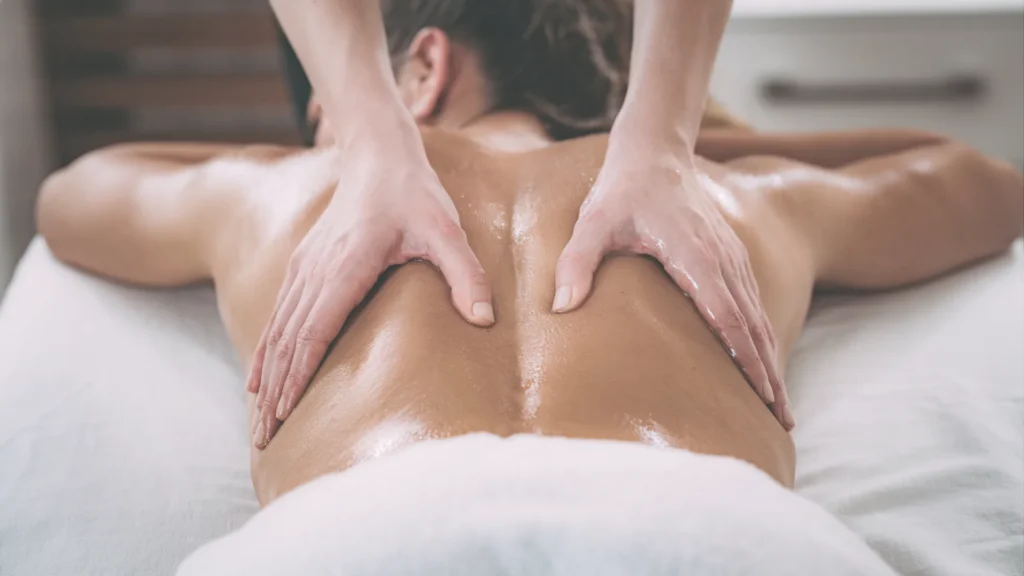
2.1. How Back Pain Massage Works
A back pain massage is more than a luxury; it’s a therapeutic technique that targets the deeper layers of muscle and connective tissue. Through long, flowing strokes, kneading, and pressure application, therapists release chronic tension that builds up around the spine.
By loosening these tight areas, blood flow increases, and oxygen reaches previously strained muscles. This process encourages the body to heal, reduces inflammation, and restores balance between opposing muscle groups.
2.2. Benefits of Back Pain Massage
Regular sessions of back pain massage offer both immediate and long-term benefits:
- Reduced lower and upper back stiffness
- Improved spinal flexibility
- Enhanced mobility during daily activities
- Lower stress hormone levels
- Prevention of muscle spasms
Moreover, consistent massage therapy trains the body to maintain a more upright, aligned position without conscious effort.
2.3. Techniques Commonly Used
Different techniques are tailored to individual needs:
- Swedish Massage: Promotes relaxation and circulation.
- Deep Tissue Massage: Focuses on releasing chronic knots in the back muscles.
- Trigger Point Therapy: Targets specific tension spots that radiate pain to other areas.
- Hot Stone Massage: Uses heat to penetrate deep tissues, easing tightness and fatigue.
When combined, these approaches form the foundation of an effective spine wellness therapy program.
3. Neck and Shoulder Relief: Releasing the Upper Body Tension
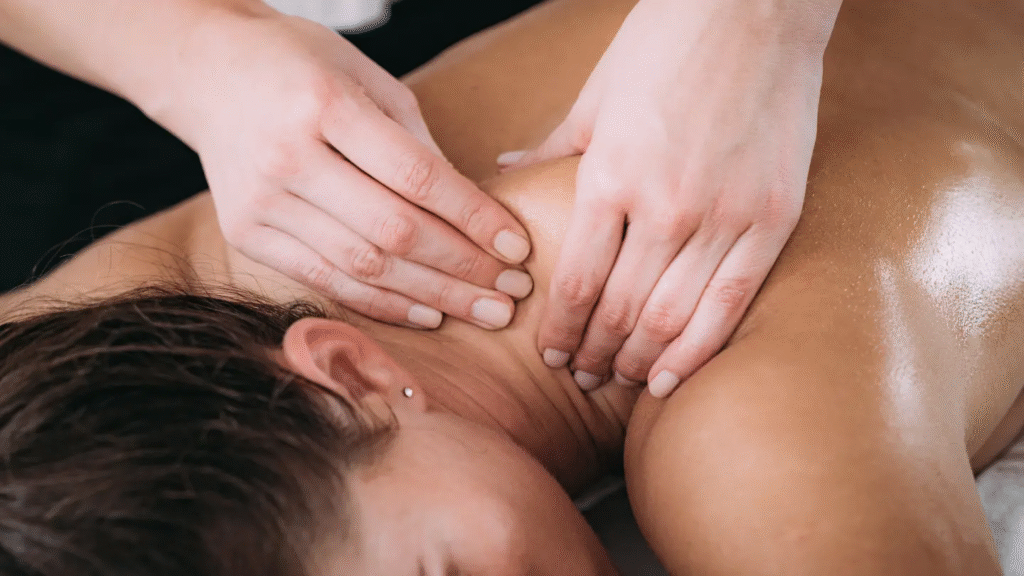
3.1. The Importance of Neck Therapy
The neck and shoulders are the first areas to respond to poor posture. Forward-head position and rounded shoulders strain the cervical spine, often leading to stiffness and headaches. A neck therapy massage helps counteract this by realigning the upper body.
Therapists use gentle stretching and circular motions along the neck and trapezius muscles to restore flexibility. This not only improves posture but also relieves pressure on the nerves that run through the upper spine.
3.2. Shoulder Release for Better Alignment
Tight shoulders pull the body forward and limit the natural curve of the spine. A shoulder relief massage works on deltoids, rotator cuffs, and upper back muscles, restoring balance between both sides of the body. When tension is released, the chest opens naturally, allowing for deeper breathing and better posture.
3.3. Combining Techniques for Lasting Results
Many posture correction spas combine neck, shoulder, and back therapy in one integrated session. By addressing these interconnected areas, the treatment ensures lasting improvements rather than temporary relaxation.
4. Spine Wellness Therapy: Rebalancing the Body’s Core

4.1. The Philosophy Behind Spine Wellness
At the core of every posture correction spa lies the principle of spinal balance. The spine is the central pillar of the body, supporting every movement and organ function. When alignment shifts, muscles must compensate, creating imbalances and fatigue.
Spine wellness therapy seeks to restore the spine’s natural curves through gentle manipulation, stretching, and guided movement. It’s a blend of physiotherapy principles and holistic relaxation techniques.
4.2. Methods Used in Spine Wellness Therapy
- Manual Alignment Techniques: Therapists use precise pressure to relax muscles around misaligned vertebrae.
- Stretching Routines: Controlled stretches enhance flexibility in the back and hips.
- Warm Compresses: Heat helps soften rigid tissue and prepares the body for deeper work.
- Breathing Exercises: Deep breathing improves oxygen flow and promotes muscle release.
Together, these elements create a balanced approach that strengthens posture from the inside out.
4.3. The Emotional Aspect of Spinal Healing
Interestingly, posture isn’t just physical — it also reflects emotion. Stress often manifests in hunched shoulders and shallow breathing. Spa environments, through aromatherapy and soothing music, calm the nervous system, helping both the body and mind let go of tension. This psychological release supports better posture naturally.
5. Muscle Release and Alignment Through Massage Therapy

5.1. Identifying Tension Patterns
Every individual holds tension differently. Some experience tightness in the lower back, while others feel it in the upper shoulders or hips. Skilled therapists assess these patterns and customize treatment accordingly.
5.2. The Role of Myofascial Release
One of the most effective methods for posture correction is myofascial release — a slow, sustained technique that targets the fascia (connective tissue surrounding muscles). Releasing this tissue allows the body to realign and move freely without restrictions.
5.3. Restoring Natural Movement
When muscle release therapy becomes part of a regular routine, posture improves effortlessly. The spine realigns, shoulders drop into place, and everyday movement becomes lighter and more fluid.
6. Ergonomic Recovery: Healing from Modern Habits

6.1. Spa Support for Desk Workers
Many people today experience “tech neck” and lower back strain due to prolonged sitting. A posture correction spa addresses these modern problems through ergonomically focused massages.
Therapists use targeted pressure along the lumbar region and upper spine to restore natural curves flattened by sitting. Stretching and strengthening exercises are often included to complement the massage.
6.2. Encouraging Healthy Work Habits
Beyond physical relief, spa professionals often guide clients in adopting ergonomic routines — adjusting chair height, screen levels, and sitting posture. Combining therapy with awareness creates lasting results.
6.3. Recovery and Prevention
Ergonomic recovery massages not only ease existing pain but also prevent future discomfort. Regular visits to a spine wellness therapy center ensure that small postural issues never evolve into chronic conditions.
7. Complementary Spa Treatments for Body Alignment
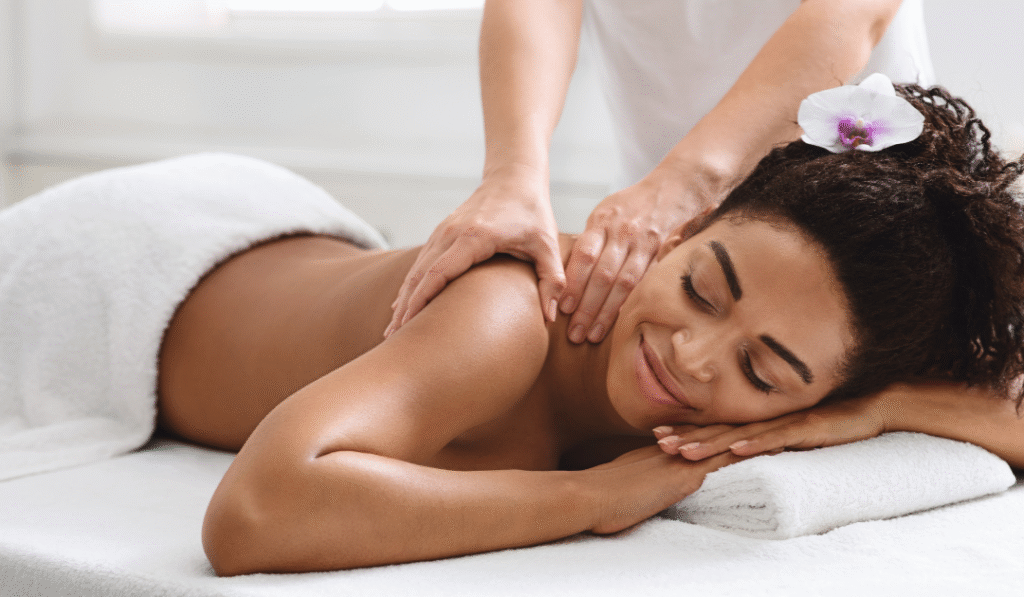
7.1. Hydrotherapy
Warm water immersion promotes spinal decompression and relieves muscle tension. Floating sessions or thermal baths soothe joints and allow natural realignment without strain.
7.2. Aromatherapy
Essential oils like eucalyptus, lavender, and rosemary calm the mind and ease inflammation. When used during back pain massages, they amplify the relaxation effect and encourage deep breathing — essential for postural correction.
7.3. Hot Stone and Bamboo Massages
Both techniques provide intense heat that penetrates deep into muscles, improving elasticity and alignment. They are ideal for clients with chronic stiffness or sciatica.
7.4. Reflexology and Energy Balancing
Foot reflexology indirectly influences spinal nerves, helping to regulate the entire musculoskeletal system. It’s often included in full-body posture correction spa programs.
8. The Role of Stretching and Mobility in Spa Programs
A holistic spa approach always includes movement. Therapists teach gentle stretches that extend the effects of a session and keep muscles flexible.
Key stretches often recommended:
- Cat-cow spine stretches
- Neck rotations
- Shoulder rolls
- Hamstring and hip openers
These exercises, when practiced regularly, reinforce body alignment and reduce the risk of recurring pain.
9. Integrating Mind-Body Awareness
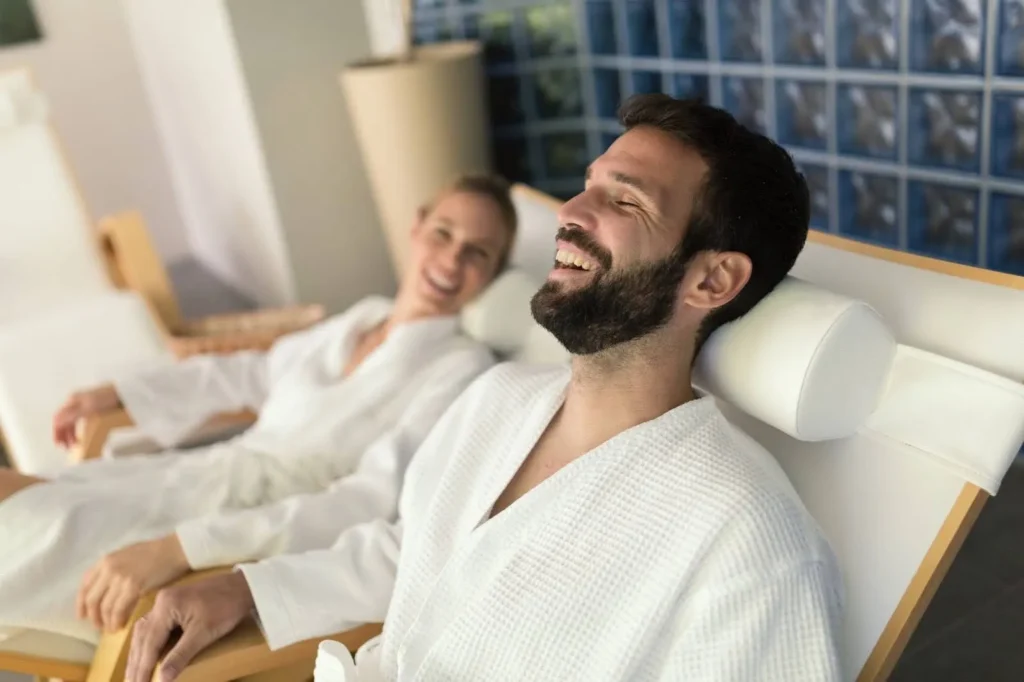
9.1. Mindfulness in Posture Correction
Mindful awareness helps maintain improvements from spa treatments. By becoming conscious of posture during everyday activities, clients prevent relapse into old habits.
9.2. Breathing and Core Engagement
Deep diaphragmatic breathing supports spinal health. Spa instructors often combine massage with breathing techniques to activate core muscles that stabilize posture naturally.
9.3. Stress Management for Postural Balance
Mental tension can tighten muscles just as physical strain can. Meditation sessions or sound therapy in spas help calm the nervous system, reducing stress-related posture problems.
10. Results You Can Expect from Regular Spa Visits
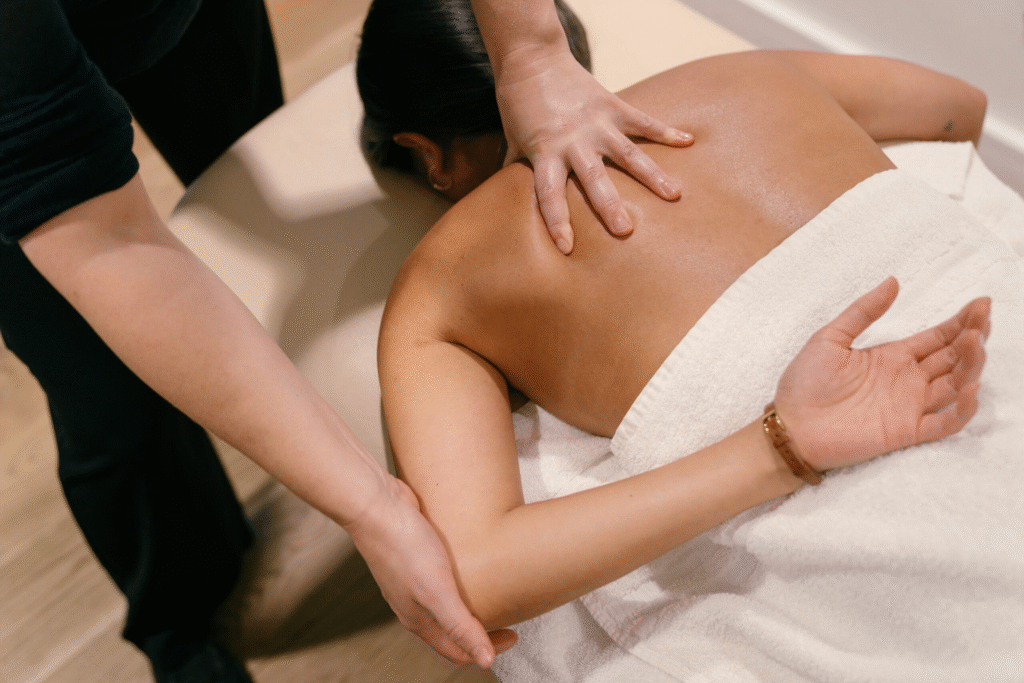
Clients who commit to a spine wellness therapy program or back pain massage routine often notice significant improvements within weeks:
- More upright and confident posture
- Reduced neck, back, and shoulder pain
- Better sleep quality
- Enhanced flexibility and mobility
- Decreased stress and improved focus
Over time, these benefits contribute to a greater sense of overall well-being.
11. How Often Should You Visit a Posture Correction Spa?
The frequency depends on personal needs and lifestyle:
- Mild tension: Once a month for maintenance
- Chronic back pain: Weekly or biweekly sessions until improvement
- Sedentary professions: Every two to three weeks to counteract daily strain
Consistency is key. The body adapts gradually, and regular sessions train muscles to maintain healthy alignment.
12. Choosing the Right Spa for Posture and Spine Care
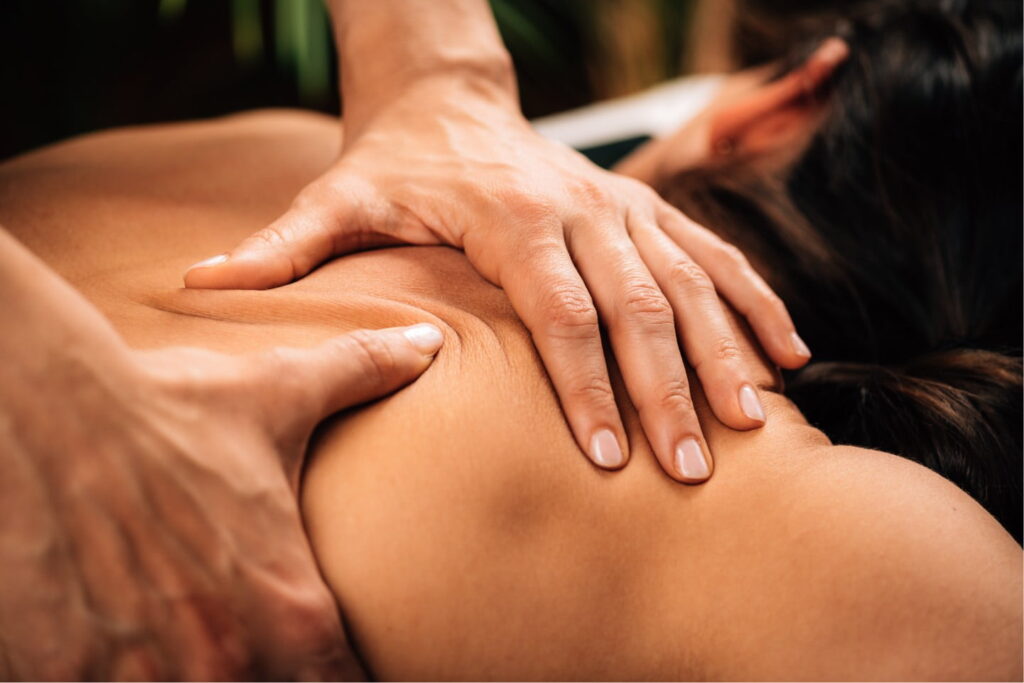
When selecting a posture correction spa or spine wellness center, consider:
- Certified therapists with experience in posture and pain management
- Customized treatment plans rather than generic massages
- Safe, hygienic facilities
- Integration of physical and relaxation therapies
- Calm environment for mental and emotional balance
The best spas blend expertise with atmosphere, creating a healing space for the entire being.
13. At-Home Support Between Spa Visits
To extend the benefits of professional treatments, small lifestyle adjustments make a big difference:
- Use ergonomic chairs and adjustable desks
- Stretch every hour during desk work
- Sleep on a supportive mattress
- Practice mindfulness and gentle yoga
- Stay hydrated to support muscle elasticity
Combining these habits with spa therapy forms a complete wellness strategy for lifelong spinal health.
14. The Long-Term Impact of Spa-Based Posture Correction
Regular spa care goes beyond pain relief. It cultivates body awareness, confidence, and ease of movement. As posture improves, breathing deepens and energy flows more freely. Many clients find themselves standing taller, not just physically but emotionally.
A back pain massage session may start as a search for relief, but it often evolves into a deeper connection between mind and body. That’s the true magic of a spine wellness therapy journey — harmony, alignment, and balance in every sense.
Conclusion: Standing Tall Through Spa Healing
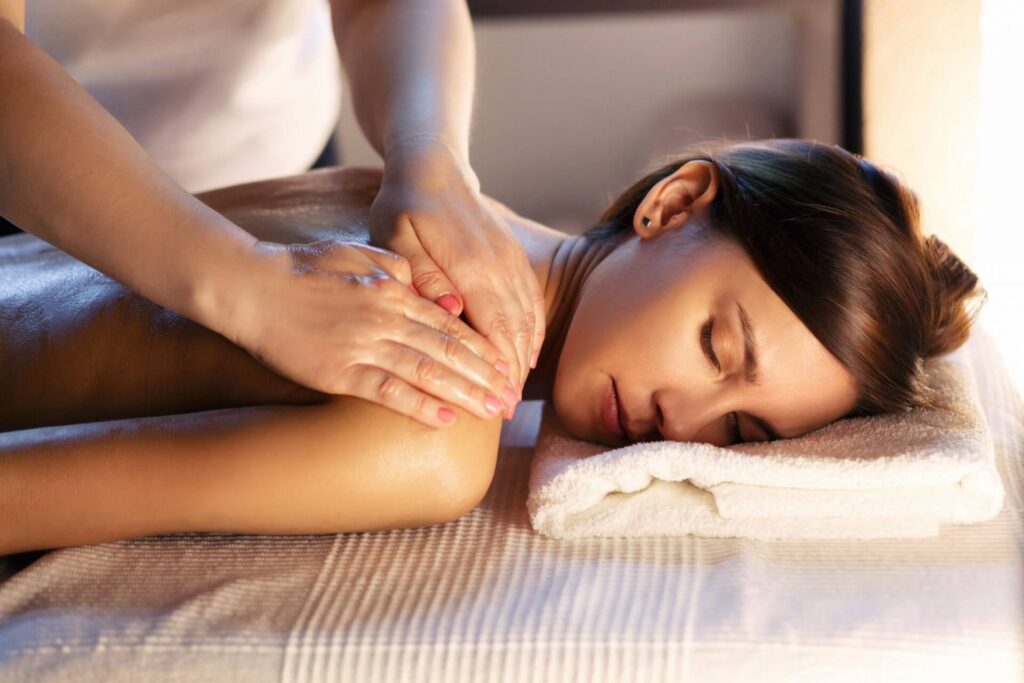
Spa Treatments for Posture and Back Pain:
Good posture is more than appearance; it’s the foundation of strength, health, and vitality. By addressing muscular tension, spinal misalignment, and emotional stress, spa treatments provide a holistic path to recovery and prevention.
Whether through a rejuvenating back pain massage, a specialized posture correction spa program, or a full-body spine wellness therapy, the results speak for themselves — better posture, reduced pain, and renewed confidence.
In the end, every spa session becomes more than relaxation; it’s a step toward living comfortably, moving freely, and standing tall — both inside and out.



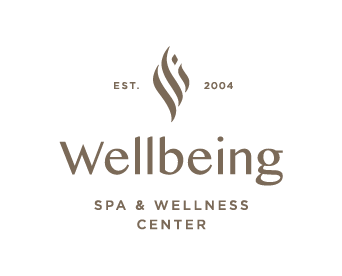
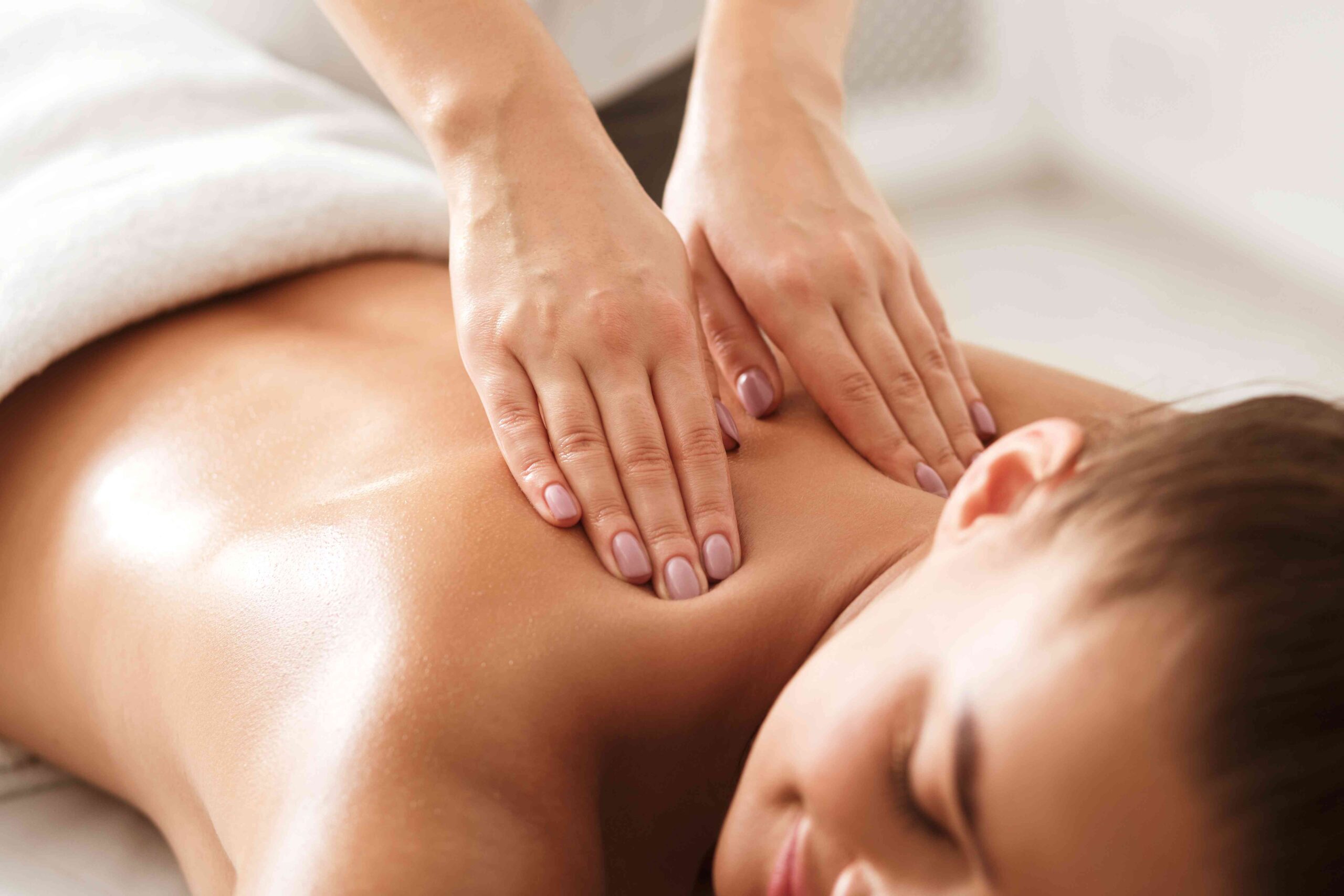

Leave a Reply